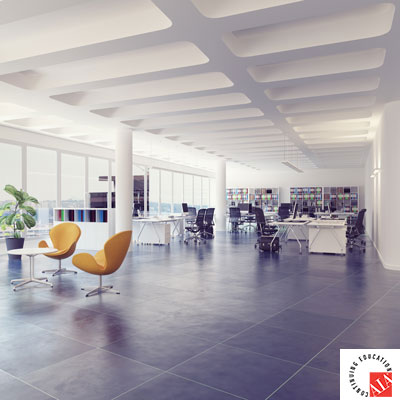Description
Course Instructor: Paul Spite
Unwanted sound impacts and affects inhabitants of our created spaces. If it not already, controlling noise will quickly become a mandated concern for designers. Attesting to increasing regulatory focus on noise, there is a recent proliferation of standards, guidelines, and codes regarding acoustics.
Very soon, many of these guidelines will no longer be mere suggestions. Most concerns covered in these standards can be addressed with a basic understanding on how sound travels and is reflected, blocked, absorbed, or transmitted by materials and assemblies chosen in designing envelopes.
Acoustic design is best addressed in an incremental fashion. This course was written to do just that. Fundamentals are first covered, including basic principles regarding sound, how its energy moves through matter, how its path and intensity can be altered, and how success in the manipulation of sound is measured. Known design strategies are discussed for controlling sound moving; from exterior to interior spaces, from interior spaces to adjacent spaces, within interior spaces, through structural components, and through building systems. Design considerations are outlined for numerous common building functions. Finally, acoustic codes and guidelines in existence now, are listed for consideration.
After completing this course participants will be able to:
- Design objectives and recommended best practices for building types where poor acoustics directly impact productivity and health of the users.
- Determine sources of noise that negatively impact users of built environments, generated both outside and from within buildings, including both air borne and structure borne sounds.
- Outline basic design practices for effectively controlling; sound transfer between exterior and interior spaces, noise transfer from interior space to adjacent spaces, and the reverberation of sound generated within spaces.
- Provide an overview of regulations and guidelines that either are, or may become law underscoring a need for competency in acoustic design, before legislatures make designing for noise control mandatory.
This Course Covers:
- Acoustics in General
- General Vocabulary Regarding Sound and Nature of Sound
- Production, Control, sound transmission and Reception
- Audible Sound Frequencies
- Effects of Sound on People
- Principals of Acoustics
- Sound Behavior Patterns
- Acoustic Measurements
- Amplified Sound
- Design Solutions for Specific Concerns Regardles of Project Type
- Resisting transmission of noise from the exterior into the interior of a space
- Resisting horizontal and vertical transmission of noise from space to adjacent space, including structure borne sound
- Controlling reverberation time of sound generated within a space
- Masking unwanted noise with sound generating systems
- Controlling system sounds, especially HVAC noises, that enter a space
- Design Considerations by Specific Project Type
Credit(s) earned on completion of this course will be reported to AIA CES for AIA members. Certificates of Completion for both AIA members and non-AIA members are available to print upon completion of the course.
This course is registered with AIA CES for continuing professional education. As such, it does not include content that may be deemed or construed to be an approval or endorsement by the AIA or any material of construction or any method or manner of handling, using, distributing, or dealing in any material or product.



